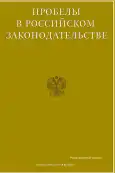Self-Protection and Fighting Techniques in the Activities of Departmentof Internal Affairs Employees
- 作者: Dottuev T.I.1
-
隶属关系:
- North Caucasus Institute for Advanced Studies (branch) of the Krasnodar University of the Ministry of Internal Affairs of Russia
- 期: 卷 15, 编号 4 (2022)
- 页面: 90-94
- 栏目: Articles
- URL: https://journal-vniispk.ru/2072-3164/article/view/147534
- ID: 147534
如何引用文章
详细
作者简介
Tengiz Dottuev
North Caucasus Institute for Advanced Studies (branch) of the Krasnodar University of the Ministry of Internal Affairs of Russia
Email: kodzokov.aznaur@bk.ru
police major, Lecturer of the Department of Physical Training Nalchik, Russia
参考
- Order of the Ministry of Internal Affairs of Russia dated July 1, 2017 No. 450 “On approval of the Manual on the organization of physical training in the internal affairs bodies of the Russian Federation” [Electronic resource] // Access mode: https://www.garant.ru/products/ipo /prime/doc/71647620/ (accessed 04/24/2022).
- Afov A.Kh. Improving the skills of fighting techniques in the process of physical training in the universities of the Ministry of Internal Affairs of Russia // Scientific Review: Humanitarian Studies. 2018. №2. pp. 14-20.
- Dadov A.V. The effectiveness of training police officers in the use of physical influence // Education. The science. Scientific personnel. 2020. No. 2. S. 210-212.
- Dadov A.V., Tkhazeplov A.M. Methodology for improving the skills of detaining offenders in physical training classes in educational institutions of the Ministry of Internal Affairs of Russia // Pedagogical journal. 2018. Vol. 8. No. 3A. pp. 52-59.
- Dottuev T.I. Methodology for building a training process in training employees of the Russian Internal Affairs Department in combat fighting techniques // Education. The science. Scientific personnel. 2019. No. 1. pp. 151-153.
- Kodzokov A.Kh. The frequency of use of fighting techniques in the practice of applying coercive measures to offenders // In the collection: Physical education and sport: topical issues of theory and practice. Collection of materials of the All-Russian scientific-practical conference. FGKOU VO "Rostov Law Institute" of the Ministry of Internal Affairs of Russia. 2016. pp. 79-84.
- Kodzokov A.Kh., Kanukoev A.M. Methods of teaching protective actions against blows to students of educational organizations of the Ministry of Internal Affairs of Russia // Pedagogical journal. 2020. Vol. 10. No. 3-1. pp. 488-493.
- Meshev I.Kh. Development of skills in the use of physical force and combat techniques in the struggle of future employees of the internal affairs bodies of the Russian Federation // Pedagogical journal. 2018. V. 8. No. 5A. pp. 133-138.
- Tkhazeplov R.L. Formation of skills in the use of combat techniques of struggle among students of educational organizations of the Ministry of Internal Affairs of Russia // Education. The science. Scientific personnel. 2020. No. 2. pp. 274-276.
- Khazhirokov V.A. The limits of the legality of the use of physical force, special means and firearms by police officers // Gaps in Russian legislation. 2020. V. 13. No. 4. pp. 138-141.
补充文件








